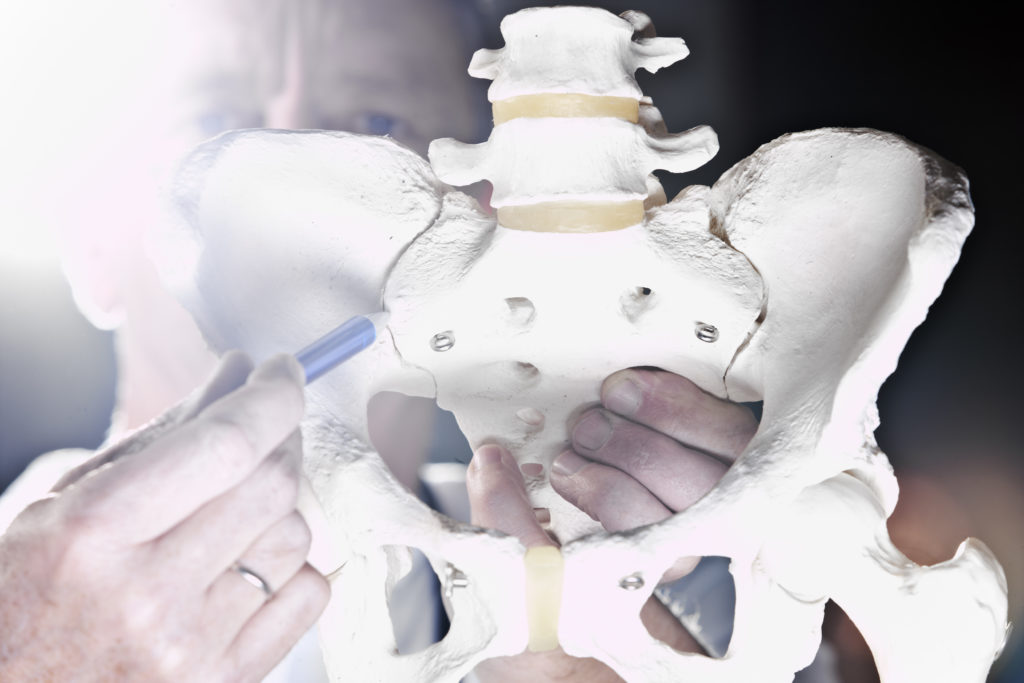This post is part of the Ultimate Guide to Total Hip Replacement
Total hip replacement surgery involves removing the diseased portion of the hip joint and replacing it with an artificial hip, called a prosthesis. Your total joint specialist will custom fit your prosthesis for your body type. The goal is to relieve hip pain and improve mobility so you can experience a better quality of life.
As medicine has advanced so have the types of hip replacements. Despite advancements, the most important part of surgery is picking a surgeon with considerable experience in the type of surgery they perform.
OrthoIndy total joint specialists are all board certified and use the latest hip replacement surgery to make sure each of their patients receive the best care possible.
Traditional hip replacement
During a traditional hip replacement, an incision is made on the side of the hip. The hip joint is exposed and the damaged part is removed and replaced with the prosthesis. This type of surgery is suitable for almost all patients.
Latest in hip replacement surgery
Although the traditional approach has been used for many years, there have been many advances in the surgical procedure and the implants that make recovery faster and the new joint more durable.
“Advances in anesthetic techniques including peripheral nerve blocks, local anesthetic injections and multimodal analgesic combinations make the procedure much less painful while decreasing side effects and dependence on opioids or painkillers,” said Dr. Ed Hellman, OrthoIndy total joint specialist. “This allows patients to walk quickly after surgery and leave the hospital earlier.”
Joint implants that are fixed to the bone without cement have been used for many years. These devices have improved so that they provide reliable, durable fixation for the vast majority of patients regardless of bone quality.
Improvements in the plastic portion of the prosthesis’ socket have dramatically reduced the chance of the plastic wearing out. Ceramic joint surfaces reduce friction and avoid the chance of metal corrosion in the joint. The result of these improvements is a joint that should function well for many years.
“A common misconception is that a hip replacement lasts ten years. In reality, a well done hip replacement using modern devices, has at least a 95 percent chance of functioning well after ten years and an 85 percent likelihood of lasting 20 years or longer,” said Dr. Hellman.
There has been much written in the press on types of hip replacements (posterior, lateral or anterior). In reality, excellent results can be achieved with each of these approaches. OrthoIndy total joint specialists vary in the type of total hip replacement techniques they use based on the needs of their patients and their own skill set.
“Your surgeon will discuss the approach, types of implants and post-operative protocols that he or she feels will give you the best chance for a pain free, well functioning and long lasting hip replacement,” said Dr. Hellman.
Overall, total hip replacement is one of the most effective operations offered to patients today. It is reliable and durable and allows you to return to a better quality of life by decreasing your pain and improving your function.
Learn more about joint replacement surgery at OrthoIndy.

Schedule an appointment
Your well-being is important to us. Click the button below or call us to schedule an appointment with one of our orthopedic specialists. If your injury or condition is recent, you can walk right into one of our OrthoIndy Urgent Care locations for immediate care. For rehabilitation and physical therapy, no referral is needed to see one of our physical therapists.





